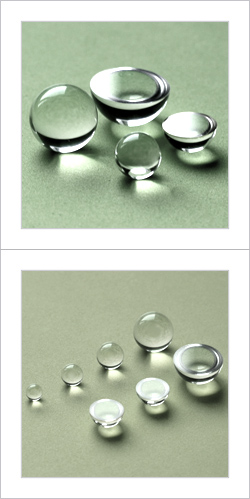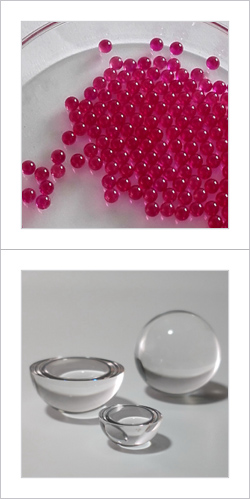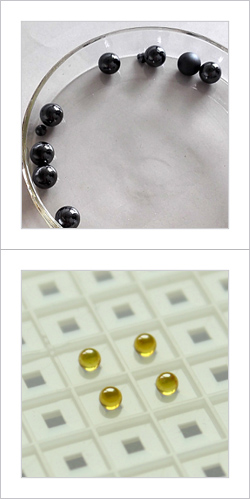Reporter found no soy sauce paste "labeled" label Yesterday there was a Hong Kong media report that there was a "chemical soy sauce" found in the sale of chemicals, and pointed out that the "chemical soy sauce" contains hydrolyzed vegetable protein which may be decomposed with hydrochloric acid. Releases carcinogens.
An interview with the reporter found that, like vinegar, the national standard also divided soy sauce into two types: soy sauce and soy sauce. The proportion of soy sauce in soy sauce was not less than 50%, which means that it does not contain any brewed soy sauce and only chemical preparation. Soy sauce is illegal.
Industry experts pointed out that if the process is controlled, the preparation of soy sauce will not produce carcinogenic substances. However, although the standard stipulates that the amount of soy sauce produced in the preparation of soy sauce must not be less than 50%, there is no way to distinguish between the preparation of soy sauce and the production of soy sauce. Unscrupulous traders are therefore guilty of intoxicating fish. Regardless of whether the sauce is prepared or brewed, they are all labeled as "brewing soy sauce."
Text/reporter Liu Jun, He Yingsi map/reporter Mok Weinong In recent days, Shanxi vinegar was mostly blended with vinegar. Yesterday, Hong Kong media reported that they found that the market had cancer “chemical soy sauceâ€. The reporter learned that the preparation of mature vinegar and preparation of soy sauce countries have content standards, but how to detect it, but it is not standardized. Caused illegal traders to fish in troubled water and sell unqualified products.
Breaking seven seasonings and compounds into "chemical soy sauce"
Yesterday’s Hong Kong media reported that an unscrupulous trader was found to have developed a “chemical sauce†for sale, as long as sugar, salt, monosodium glutamate, yeast extract, hydrolyzed vegetable protein, inosinic acid, and guanylic acid, seven kinds of seasonings and compounds were mixed. Together, they can produce “chemical oyster sauceâ€, which not only has a good taste, but also has a “sticky mouthfeel†feel of pure oil. It is just a matter of smelling a slightly pungent smell.
Reporters patrol the city: Almost all products claim to be "brewing soy sauce"
Reported that the hydrolyzed vegetable protein in the formula may release carcinogens. It has been found in the past that if hydrochloric acid is used in the hydrolysis process, carcinogens are released, including trichloropropanediol (3-MCPD) and 1,3-dichlorohydrin (1,3-DCP). The World Health Organization does not list the recommended intake of 1,3 dichloropropanol, which is harmful to humans and cannot be ingested by humans; and trichloropropanediol is another controversial substance that can cause men to suffer from testis cancer.
How is the situation in Guangzhou? Yesterday, the reporter visited several supermarkets and found that almost all soy sauce products were written with the word “brewing soy sauceâ€. No product was nominally “made of soy sauceâ€.
In a bottle of 410 ml "X Sky Delicious" packaging, the reporter saw that the food additive marked with disodium 5-inosinate, disodium 5-guanosinate, sodium benzoate, sucralose Wait. Among them, inosinic acid and guanylic acid are generally used together with MSG (sodium glutamate) for freshening.
It takes six months to make soy sauce and only 10 hours for chemical leaching yesterday. This reporter learned that soy sauce also has brewing soy sauce and making soy sauce. The hybrid method mentioned by Hong Kong media may be just a process for preparing soy sauce. However, there is absolutely no brewing soy sauce ingredient. Pure soy sauce made from a mixture of seasonings and compounds is not in conformity with national standards and is harmful to the human body.
Relevant person in charge of the technical department of Lee Kum Kee told reporters yesterday that in fact, in the 1960s and 1970s, "chemical soy sauce" had appeared. "It means that the soy sauce used a chemical process to remove soy bean oil. Soybean meal is produced and then hydrochloric acid is decomposed and neutralized with soda ash to obtain a flavoring agent. This method was learned from Japan."
She further explained that later this so-called "chemical soy sauce" was accused of containing the controversial substance 1,3-dichlorohydrin, a chemical soy sauce process that was once banned from use. However, with the development of science, the industry has found a way to get rid of clean dichlorohydrin, and to provide "chemical soy sauce" the space for survival. However, what Hong Kong media called "chemical soy sauce" is obviously different from this.
There is no way to distinguish between Lee Kum Kee's technical department responsible for preparation or brewing. Brewing and chemical preparation are two different processes. Brewing soy sauce in Guangdong requires at least 3 months to half a year's brewing period, and leaching with chemical methods can be done in 8 to 10 hours. Another chemical decomposition and degradation with enzymes are two different methods.
The preparation of disguised brewing can not check the "preparation of soy sauce" standards, the proportion of soy sauce must not be less than 50%, that is, without any brewing soy sauce, using only a variety of chemicals formulated "chemical soy sauce" is illegal . However, the person in charge of the above-mentioned Lee Kum Kee said that the key to the problem is that there is still no way to determine whether the soy sauce actually contains 50% or more of the brewed soy sauce. Since many consumers already know that brewing soy sauce is better, some manufacturers have labeled soy sauce products as brewing soy sauce in order to compete for the market.
The reporter learned that the current sampling inspection of soy sauce products by the quality supervision department is mainly to test food additives (preservatives, pigments, etc.) and bacterial tests, and no genetic testing has been conducted. For example, from March to April this year, the Guangzhou Municipal Bureau of Quality Supervision entrusted quality inspection agencies to supervise and inspect the soy sauce products produced in this Municipality. For benzoic acid, sorbic acid, total bacteria, coliform bacteria, pathogenic bacteria, Rhodamine B, and aflatoxin B1, red carmine, amaranth, temptation red and other items for testing. At that time, all batches of 24 batches were qualified. The unqualified conditions found in the past were mainly due to the quality index amino acid nitrogen (measured by nitrogen), substandard items, safety indicators, preservatives, and excessive number of colonies.
How to distinguish the new standard is still not involved in the national standard "brewing soy sauce" and the industry standard "preparation of soy sauce" is being revised, the amendment mainly involves ammonium salt, soluble salt-free solids (important indexes affecting flavor), amino acid nitrogen and other safety and quality The indicator does not involve the modification of the acid hydrolyzed vegetable protein seasoning liquid. China Condiment Association issued the draft of the above two standards (second draft) in July this year. Among them, "preparation of soy sauce" modified the proportion of ammonium salt, while increasing the requirement on the product label to indicate the proportion of brewing soy sauce (total nitrogen). The new standard also does not address the distinction between brewing and formulating.
Linked soy sauce allows the use of additives and the use of limited (partial)
Sodium benzoate 1g/kg
Propionic acid and its sodium salt, calcium salt 2.5g/kg
Preservative Parabens and Their Sodium Salts 0.25g/kg
Nisin 0.2g/kg
Sucralose (also known as sucralose) 0.25g/kg
Sorbic acid and its potassium salt 1g/kg
Jujube color 1g/kg
Acesulfame potassium (also known as Acesulfame) 1g/kg
Caramel color (plus ammonia production, common law, ammonium sulfite method) is used in proper amount according to production needs.
Buying soy sauce shakes three times and shakes: good soy sauce shakes up and it will bubble up a lot, and it's not easy to disperse. Three Looks: A look at the craft is to brew or make soy sauce. The traditional high-salt dilute state soy sauce has better flavor and higher salt content, and the low-salt solid-state fermented soy sauce adopting the quick-brewing process has lower salt content. Secondly, the higher the amino acid nitrogen content, the more fresh the taste. For the purpose of three applications, soy sauce should be marked for use with meals or for cooking purposes. It can be used as a direct entrance for meals, and has high health indicators. If it is used for cooking, it cannot be directly used to mix cold dishes.
Ball Lenses are commonly used to improve signal quality in fiber coupling applications, or for use in endoscopy or bar code scanning applications. Ball Lenses feature short back focal lengths to minimize the distance needed from the Ball Lens to the optical fiber.
Half-Ball (hemispherical) lenses are ideal for applications such as fiber communication,endoscopy, microscopy, optical pick-up devices,and laser measurement systems.
Worldhawk can provide spherical ball lenses and half ball lenses in a range of substrates for performance in the ultraviolet to the NIR. Such as including H-K9L(N-BK7), Sapphire, CaF2, BaF2, ZnSe or custom materials upon request.




Fused Silica Ball Lens,Optical Fused Silica Ball Lens,Fused Silica Glass Ball Lens,Glass Fused Silica Ball Lens
ChangChun Worldhawk Optics Co.,Ltd , https://www.worldhawk-optics.com